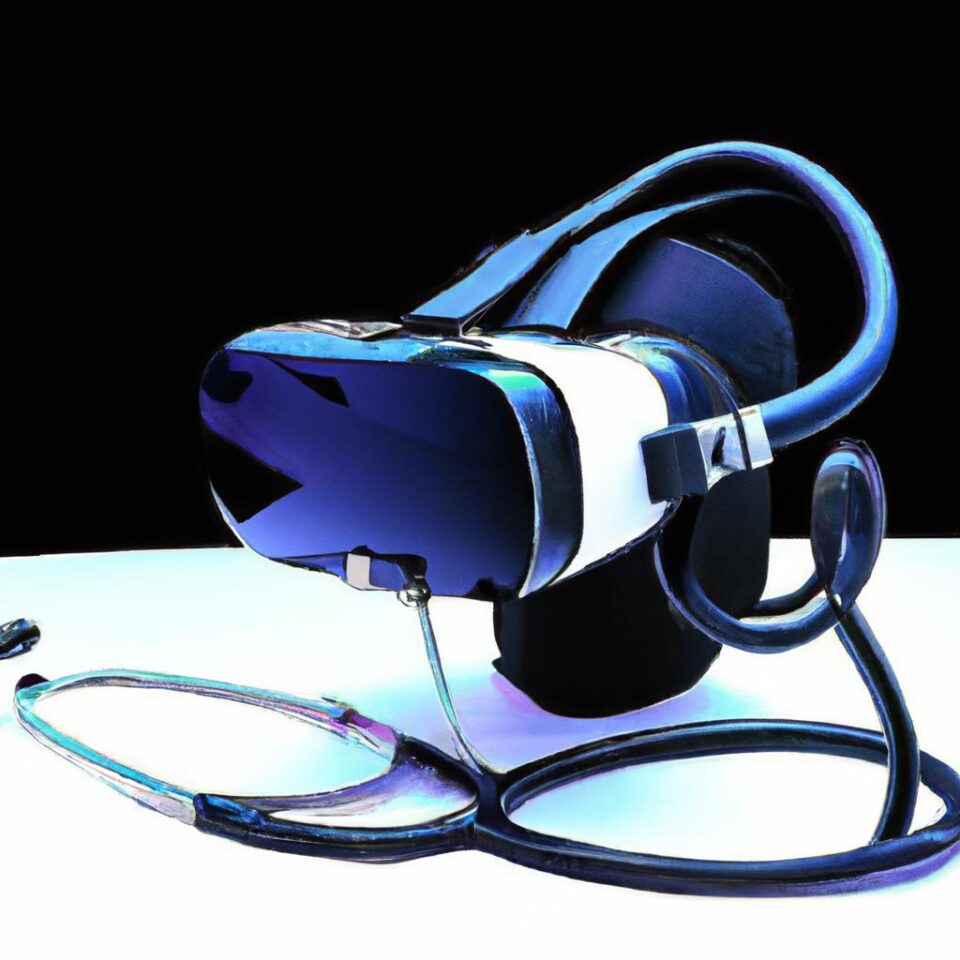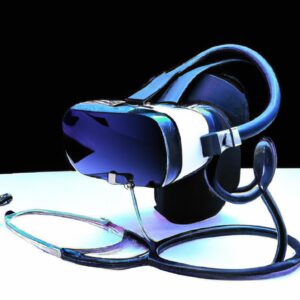Introduction
Augmented Reality (AR) and Virtual Reality (VR) are powerful technologies that have the potential to revolutionize health care. These technologies allow medical professionals to simulate complex medical procedures with a level of accuracy and realism that would not be possible without them. By providing a safe and effective training environment, AR & VR have the potential to reduce errors and increase efficiency in medical practice. This guide will introduce you to the advancements in healthcare and surgery that can be made possible through the use of AR & VR technologies.
History of AR & VR in Healthcare
The use of augmented reality (AR) and virtual reality (VR) for medical applications are relatively new technologies, but they have been around since the 1960s. Over the past few decades, as computing power has increased, so has the potential of AR & VR technology in the medical field.
In the early years, the use of VR was mostly confined to the entertainment industry for gaming and educational purposes. In the 1990s, progress was made in this field, with new advancements in medical imaging, as well as computer-assisted surgery. Today, AR & VR are being used in a variety of ways in the medical field, from training surgical teams to performing complex surgeries.
The potential of AR & VR technology is not limited to the medical field. In recent years, its applications have expanded to use across other industries, such as aerospace, construction, and even marketing. With the advent of 5G internet technology, these applications will only increase in the years to come.
Benefits/Impact of AR & VR in Healthcare
The use of Augmented Reality (AR) and Virtual Reality (VR) technologies have revolutionized the healthcare field, by providing doctors and other medical professionals with improved accuracy and efficiency when it comes to diagnosis and treatment. A number of studies have also shown that the use of AR & VR technology in the medical field can lead to enhanced patient care.
The use of AR & VR technologies has a number of key benefits, such as improved accuracy of diagnosis, more efficient usage of resources, improved safety in the operating room, better communication between healthcare providers, improved understanding of complex problems, and more personalized medicine.
Improved accuracy of diagnosis is one of the most significant benefits of using AR & VR technology in the medical field. By having access to comprehensive 3D models of the body, doctors can more accurately diagnose and treat patients. For instance, they can simulate how a certain cancer may appear or how a drug or surgery would impact a particular area of the body. This kind of detailed information helps to ensure that patients receive the right treatment more quickly and safely.
In addition to improved accuracy of diagnosis, the use of AR & VR technology can also result in improved safety in the operating room. By having access to 3D models of the body, surgeons can plan out procedures more precisely and reduce the chances of making potentially fatal errors during operations. Furthermore, the use of AR & VR technology can also help to shorten the length of surgical procedures, leading to increased efficiency and cost savings.
Finally, the use of AR & VR technology can also lead to improved communication between healthcare providers. By having access to 3D models of the body, doctors can more easily explain complex medical issues to patients and provide more personalized and tailored care. Additionally, doctors can also share 3D models of medical procedures with other healthcare providers, allowing for faster and more collaborative decision-making.
In summary, AR & VR technologies have the potential to revolutionize the medical field, and have already proven to be beneficial in terms of improved accuracy, fewer errors, enhanced patient care, improved communication, and greater collaboration among healthcare providers.
What Are Medical AR & VR Devices?
Augmented Reality (AR) and Virtual Reality (VR) technologies are becoming increasingly popular within the medical field. With these emerging technologies, healthcare professionals can gain a better understanding of a patient’s physical condition or provide virtual medical treatments. In order to power these game-changing systems, specialized hardware is necessary.
The most commonly used devices for AR & VR in the medical field are headsets, which allow users to experience virtual environments. These include Oculus Rift, HTC Vive and Google Cardboard. These systems use lenses, sensors, and earphones to create immersive experiences. Additionally, some headsets include handheld controllers that can be used to interact with the virtual world.
AR & VR technology also utilizes smartphones and tablets. These devices are used to view 3D images, track patient information, and enable doctors to access patient records remotely. Moreover, 3D printing is used for creating anatomical models and surgical instruments.
The advantages of these devices are plentiful. They enable healthcare professionals to receive a more comprehensive understanding of a patient’s condition before making a diagnosis. Virtual reality in particular allows doctors to practice complex surgeries without having to risk any actual physical harm to the patient. AR & VR technologies also save time as more accurate diagnoses can be made without the need for extensive testing.
The potential disadvantages of AR & VR are mainly related to privacy and data security. Some devices lack sufficient security measures which could potentially leave sensitive medical data vulnerable to cyberattacks. Furthermore, compatibility issues can arise between different types of hardware and software.
Examples of Technology Being Used in the Field
The use of AR & VR technologies in medical fields has an ever-growing list of applications. In particular, there are some examples of how this technology is being used in the field that often stand out.
One of the most common examples of AR & VR being used in healthcare and surgery is for training purposes. Through the use of virtual reality, healthcare professionals can immerse themselves in a simulated surgical environment, allowing them to practice on realistic models of patients. This increases their ability to perform complex procedures, reducing errors and providing better care.
Another example of AR & VR being used in the medical field is in remote consultation and treatments. By using augmented reality, medical practitioners can “see” through the patient’s eyes, helping them to diagnose an issue or monitor a procedure without ever needing to be in the same room. This can save time and money in many cases, especially when performing surgeries.
Another popular application for AR & VR is in the education of medical students. By using virtual reality, students can gain invaluable experience in a clinical setting with realistic patient scenarios. This can provide a much more interactive learning experience than studying textbooks alone.
Finally, AR & VR technologies are also being used to help patients cope with conditions such as chronic pain or anxiety. By using virtual reality headsets, they can be taken to calming spaces or simulate activities that will distract them from their pain and discomfort.
Training and Education Possibilities With AR & VR Tech
AR and VR technology can be used to help medical professionals gain in-depth knowledge and experience in a safe, virtual environment. This practice has the potential to reduce errors and improve overall patient care by providing hands-on training to healthcare professionals.
In addition to being used in surgery simulations and medical training, these technologies can also be used to better explain complex medical conditions to patients. For example, a doctor can use VR technology to provide an interactive visual representation of a condition, helping the patient understand what is going on in their body.
VR can also be used to simulate treatments and preventive measures, allowing medical professionals to test different scenarios and plan out the best course of action for a given situation. This helps them become better prepared for any unexpected complications and increases the effectiveness of treatment.
Finally, AR and VR can also be used to increase patient engagement, offering an immersive and engaging experience for those undergoing medical procedures or treatments. By making it easier for patients to participate and understand the process, this can often lead to better outcomes in terms of health and satisfaction.
Conclusion
This guide has explored the many potential applications of AR & VR technologies within the medical field. We have discussed their history, current uses, and how they can be used to improve efficiency, reduce errors, and enhance patient care. It also introduced some of the hardware required for these systems to function, showcased examples of how they are being used, and detailed the potential training and education possibilities with this technology. Ultimately, the use of AR & VR in medical settings presents a wide variety of opportunities to improve healthcare outcomes.

